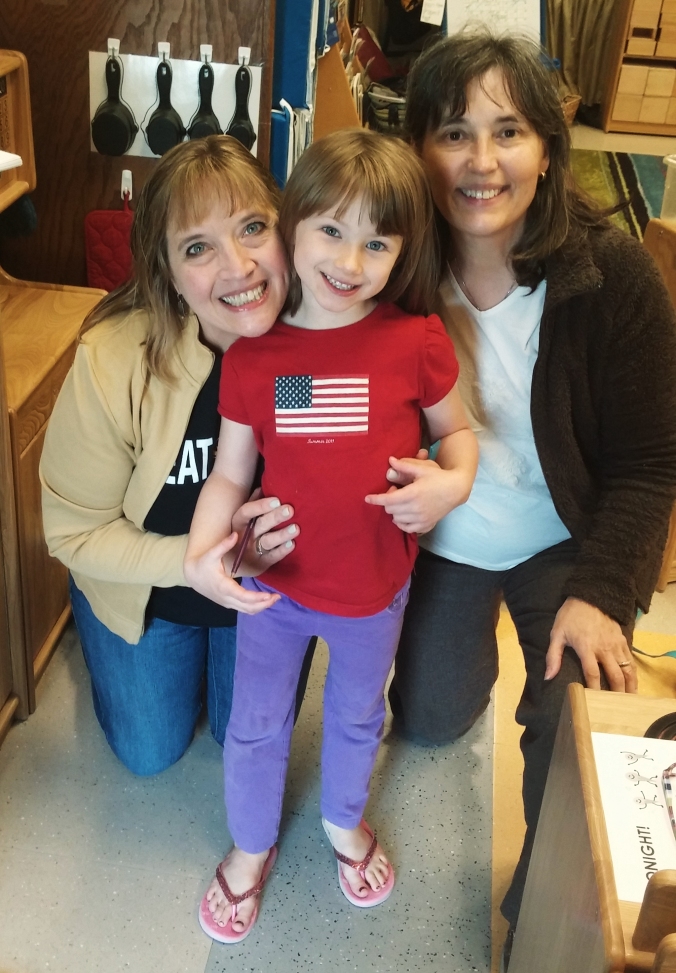 Story written by Emily Adams.
Story written by Emily Adams.
COLUMBIA – Columbia resident Amanda Crawford expected her child to learn the ABCs at preschool but was surprised to discover her daughter had a talent for math – and a budding love for learning.
Crawford said her daughter, now 5 years old, didn’t go to daycare as a toddler. Columbia’s Title I preschool, which she began attending at age 3, was her first real exposure to other children.
“She was either with Mom or Dad,” Crawford said. “Going to preschool helped her pick up on social cues from other kids.”
The early exposure to education isn’t a guarantee that Crawford’s daughter will be successful in school, but it increases the odds in her favor, said Mary Rook, Columbia Public School’s preschool director.
“If they’re successful in preschool they’re more likely to be successful in kindergarten,” she said. “They’re more likely to be successful in 3rd grade. They’re more likely to be successful in high school.”
It’s an opportunity Crawford said she would not have been able to afford for her daughter if not for Columbia’s Title I preschool program, which served more than 620 kids in the past year.
Funding for the program comes from the federal government and covers full tuition at twenty-six Columbia classrooms. Annual funding is based on the number of students in the district who qualify for free or reduced price lunches and is supplied in hopes that students will meet state standards.
Community support for the program was reflected by voters’ approval of a recent bond issue that will pay for a new preschool building, due to break ground this month, Rook said. The building will host 10 preschool classes and seven early childhood classes in addition to special education and therapy services.
Students are not the only ones who benefit from the Title I program, which also seeks to support low-income student’s families. Fran Grant, a preschool teacher at Battle High School, teaches four days a week. The fifth day, she meets with parents.
“On Fridays we conduct mostly family visits. We bring education activities and materials for the family to use at home. We also discuss behavior, family situations, and developmental questions” said Grant, who also introduces parents to programs offering affordable food and clothes if they are in need.
In the classroom Grant teaches a “Golden Triangle” of language, social, and self-help skills that will prepare her students for kindergarten.
“(Elementary) school is a very different thing. It moves fast and has a lot of transitions. The kids have a kindergarten teacher, a music teacher, an art teacher, and many other adult staff who direct them throughout their day” she said. “By helping our students develop strong language social and self-help skills, they can be more successful in their new school setting.”
Crawford’s daughter, one of Grant’s former students, attended her first formal class this year in summer school. Crawford said her daughter wasn’t as excited about summer school as she had been about preschool, but picked up concepts much faster.
“She is really good at math and is even starting to pick up on words and sounds,” she said.
Rook, the preschool director, said the Title I program has expanded significantly since it began with a single classroom. But it still is not available to everyone.
To be eligible, low-income families must complete a screening at the Title I office at Eugene Field School in Columbia. The screening assesses the child’s development.
“The children who have the highest need developmentally, that’s who we offer preschool to first,” Rook said.
Even with free tuition, some families can’t take advantage of Title I schools because they don’t have transportation. Federally funded preschool programs Head Start and Title I together only cover about a third of low income families, said John Wright, a former state representative from Columbia.
Wright co-sponsored House Bill 1689, which goes into effect this school year, as an attempt to help school districts cover attendance gaps in preschools.
“In the first year only a subset of schools, those with unaccredited status, can qualify for funding under the bill. In the second year funding is expanded further to provisionally-accredited districts,” he said, explaining that unaccredited districts are prioritized so students can improve to meet state standards.
Rook, the preschool director, said funds spent preparing children for school save money down the road, reducing the likelihood that children will end up in jail or need other social services.
“For every $5 you put in early childhood you get $10 or $15 back,” she said. “We are saving money on prison beds by investing in children.”
Great job, Emily!
LikeLike